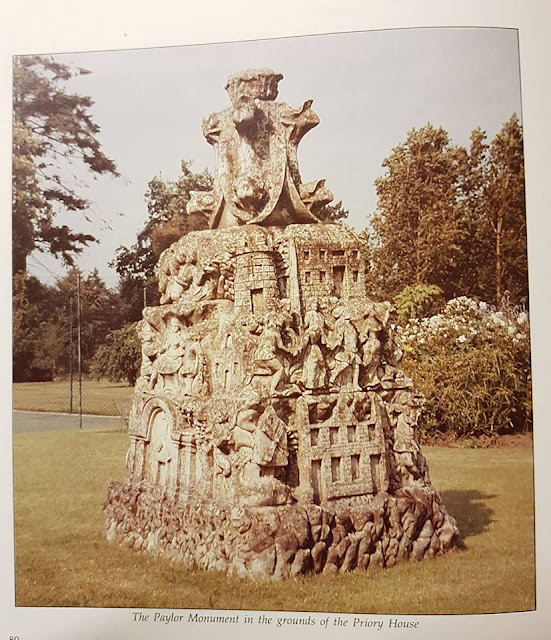An interesting portrait of Samuel Tufnell, an early Georgian country gentleman. This portrait comes with a copy of the book "Samuel Tufnell of Langleys 1682-1758; the Life and Times of an Essex Squire" by Francis W. Steer.
"At Great Waltham in the centre of Essex is the mellow brick mansion of Langleys where, over the dining room fireplace hangs the portrait of a grave-faced boy in a red coat. Two miles away, at Pleshey - a place known to all readers of Shakespeare - is a massive marble monument with the bust of an old man who died full of years and achievements.
The boy and the man are one. The portrait and the bust are both of Samuel Tufnell who bought Langleys and made it into the stately home we see today.
As a landowner, he took no small part in the affairs of the county of his adoption; he served his country too in positions requiring tact and shrewd judgement.
The object of this book is to give a picture of the life and times of a country gentleman during the first half of the eighteenth century, the period of William of Orange, Queen Anne, and the first two Georges."
So begins this illuminating insight into a way of life long gone, which with the portrait, makes us feel we really know the man and his times.
The portrait itself is a good, honest, no-nonsense image of the sitter...he looks directly and frankly at the viewer. The unknown artist was clearly influenced by the work of Joseph Highmore (1692 – 1780), an artist very fashionable with the gentry at this time.
The frame is a good example of 18th century carved giltwood.
SIZE: 36 x 30.5 inches inc. frame.
PROVENANCE: Sir Robert Wilmot Horton.
Yorkshire Private Collection.
Verso, Victorian Gothic script label: "Painting of Samuel Tufnell, esquire, of Langleys, married Elizabeth, daughter of George Cressener. The property of Sir Robert Wilmot-Horton; Artist J. Highmore."
(It has been suggested by a member of the family that this may not be Samuel Tufnell, but his grandson, also called Samuel Tufnell, who married the daughter of Wilmot-Horton).
See image 5 for Langleys as it is today.
"At Great Waltham in the centre of Essex is the mellow brick mansion of Langleys where, over the dining room fireplace hangs the portrait of a grave-faced boy in a red coat. Two miles away, at Pleshey - a place known to all readers of Shakespeare - is a massive marble monument with the bust of an old man who died full of years and achievements.
The boy and the man are one. The portrait and the bust are both of Samuel Tufnell who bought Langleys and made it into the stately home we see today.
As a landowner, he took no small part in the affairs of the county of his adoption; he served his country too in positions requiring tact and shrewd judgement.
The object of this book is to give a picture of the life and times of a country gentleman during the first half of the eighteenth century, the period of William of Orange, Queen Anne, and the first two Georges."
So begins this illuminating insight into a way of life long gone, which with the portrait, makes us feel we really know the man and his times.
The portrait itself is a good, honest, no-nonsense image of the sitter...he looks directly and frankly at the viewer. The unknown artist was clearly influenced by the work of Joseph Highmore (1692 – 1780), an artist very fashionable with the gentry at this time.
The frame is a good example of 18th century carved giltwood.
SIZE: 36 x 30.5 inches inc. frame.
PROVENANCE: Sir Robert Wilmot Horton.
Yorkshire Private Collection.
Verso, Victorian Gothic script label: "Painting of Samuel Tufnell, esquire, of Langleys, married Elizabeth, daughter of George Cressener. The property of Sir Robert Wilmot-Horton; Artist J. Highmore."
(It has been suggested by a member of the family that this may not be Samuel Tufnell, but his grandson, also called Samuel Tufnell, who married the daughter of Wilmot-Horton).
See image 5 for Langleys as it is today.























